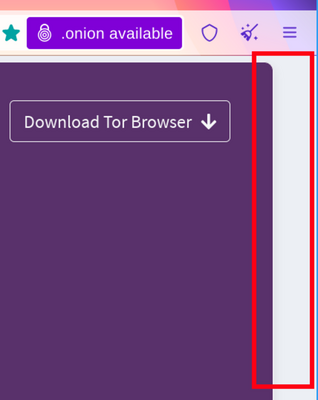Hiểu cách theo dõi "vân tay thiết bị" của trình duyệt
Theo dõi "vân tay thiết bị" là tập hợp thông tin có hệ thống về trình duyệt web để đưa ra những phỏng đoán có cơ sở về danh tính hoặc đặc điểm của người dùng.
Các cài đặt và tính năng của mỗi trình duyệt đều tạo ra một "dấu vân tay thiết bị".
Hầu hết các trình duyệt đều vô tình tạo ra mã "vân tay thiết bị" duy nhất cho mỗi người dùng, dấu vân tay này có thể bị theo dõi trên internet.
Để biết thêm thông tin chuyên sâu về dấu vân tay của trình duyệt, hãy tham khảo các bài viết sau trên Tor Blog: Dấu Vân Tay của Trình duyệt: Giới thiệu và những Thử Thách Phía Trước và Tor Browser: Di sản thúc đẩy sự đổi mới duyệt web riêng tư.
Tại sao theo dõi "vân tay thiết bị" đe doạ tới quyền riêng tư không gian mạng?
Đầu tiên, không cần phải xin phép người dùng để thu thập thông tin này.
Bất kỳ tập lệnh nào chạy trong trình duyệt đều có thể âm thầm theo dõi "vân tay thiết bị" mà người dùng không hề biết về nó.
Thứ hai, nếu một thuộc tính của dấu vân tay trình duyệt là độc nhất hay nếu tổng lại nhiều thuộc tính là độc nhất, cái máy có thể được xác định và theo dõi trên internet.
Điều này có nghĩa là nếu ngay cả khi không có các cookie, một cái máy cũng có thể bị theo dõi sử dụng dấu vân tay của nó.
Cách trình duyệt tor giảm thiểu theo dõi "vân tay thiết bị"
Trình duyệt Tor Browser được thiết kế đặc biệt để giảm thiểu tính độc đáo của dấu vân tay (fingerprint) của mỗi người dùng theo các số liệu khác nhau.
Việc làm cho tất cả người dùng trình duyệt Tor Browser trông tương đồng như nhau trên internet là một thực tế bất khả thi, mục tiêu của chúng tôi đó là giảm số lượng các gói "buckets" dễ phân biệt cho từng thang đo.
Cách tiếp cận này khiến việc theo dõi người dùng cá nhân một cách hiệu quả trở nên khó khăn hơn.
Một số thông tin nhất định, như hệ điều hành và ngôn ngữ, cần cho sử dụng chức năng và không thể bị ẩn hoặc giả mạo hoàn toàn.
Thay vào đó, Trình duyệt Tor giới hạn sự đa dạng trong các thuộc tính này để giảm tính khác biệt.
Ví dụ , nó giới hạn việc liệt kê phông chữ và áp dụng dự phòng ký tự, chuẩn hóa kích thước màn hình và cửa sổ bằng cách sử dụng hộp thư và hạn chế nhiều ngôn ngữ được yêu cầu trong một tập hợp nhỏ, được xác định trước.
Mục tiêu chính của các biện pháp bảo vệ chống dấu vân tay của Tor Browser là làm cho việc thu thập đủ thông tin để xác định người dùng trở nên khó hơn, từ đó tăng cường quyền riêng tư mà không cần ảnh hưởng đến chức năng cần thiết.
Tính năng chống theo dõi "vân tay thiết bị" của trình duyệt tor
Cạnh Đen
Để ngăn việc lấy dấu vân tay (fingerprinting) dựa trên kích thước màn hình, Tor Browser bắt đầu với một cửa sổ nội dung được làm tròn thành bội số của 200px x 100px.
Chiến lược ở đây là đặt tất cả người dùng vào một vài nhóm để khiến việc tách riêng họ trở nên khó khăn hơn.
Điều đó vẫn hoạt động cho đến khi người dùng bắt đầu thay đổi kích thước cửa sổ của họ (ví dụ: bằng cách phóng to hết cỡ chúng lên hoặc chuyển sang chế độ toàn màn hình).
Tor Browser cũng cung cấp tính năng bảo vệ dấu vân tay cho các tình huống đó, được gọi là Letterboxing, một kỹ thuật được phát triển bởi Mozilla và được trình bày vào năm 2019.
It works by adding margins to a browser window so that the window is as close as possible to the desired size while users are still in a couple of screen size buckets that prevent singling them out with the help of screen dimensions.
Nói một cách đơn giản, kỹ thuật này tạo ra các nhóm người dùng có kích thước màn hình nhất định và điều này khiến việc phân loại người dùng dựa trên kích thước màn hình trở nên khó khăn hơn vì nhiều người dùng sẽ có cùng kích thước màn hình.

Tính năng khác chống theo dõi "vân tay thiết bị"
Thêm vào đó,Trình duyệt Tor còn sử dụng nhiều tính năng khác để giảm thiểu việc theo dõi "vân tay thiết bị" của trình duyệt và bảo vệ quyền riêng tư của người dùng.
Các tính năng này bao gồm chặn trích xuất hình ảnh Canvas, tích hợp NoScript, giả mạo tác nhân người dùng (User-Agent spoofing) và cách ly bên thứ nhất (First-party isolation).
Để biết danh sách đầy đủ các tính năng, xin vui lòng đọc tài liệu thiết kế và hoàn thiện Tor Browser.